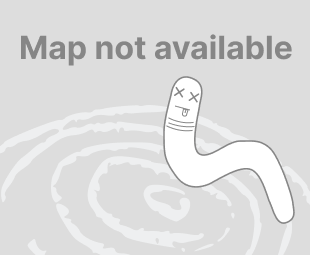
AfSIS Nutrient
Africa SoilGrids nutrients
Coverage: Continental - Africa
Data type: Raster

Coverage: Continental - Africa
Data type: Raster

Coverage: Continental - Africa
Data type: Raster

Coverage: Continental - Europe
Data type: Raster

Coverage: National - Brazil
Data type: Vector - Polygon

Coverage: Global
Data type: Vector - Point

Coverage: National - Chile
Data type: Raster

Coverage: Continental - Europe
Data type: Raster

Coverage: National - Kenya
Data type: Raster

Coverage: National - Brazil
Data type: Vector - Point

Coverage: Global
Data type: Raster

Coverage: Global
Data type: Vector - Point

Coverage: Global
Data type: Vector - Polygon

Coverage: Continental - Europe
Data type: Raster

Coverage: National - Nigeria
Data type: Vector - Point

Coverage: Continental - Africa
Data type: Vector - Point

Coverage: National - Kenya
Data type: Vector - Point

Coverage: Continental - Europe
Data type: Vector - Point

Coverage: Continental - Europe
Data type: Vector - Point

Coverage: Continental - Europe
Data type: Vector - Point

Coverage: Continental - Europe
Data type: Vector - Point

Coverage: National - Brazil
Data type: Raster

Coverage: Continental - Europe
Data type: Raster

Coverage: National - Kenya
Data type: Vector - Point

Coverage: National - Kenya
Data type: Vector - Point

Coverage: National - Tanzania
Data type: Vector - Point

Coverage: Global
Data type: Raster

Coverage: National - Australia
Data type: Raster

Coverage: National - USA
Data type: Raster

Coverage: Global
Data type: Raster

Coverage: National - Tanzania
Data type: Vector - Point

Coverage: National - Tanzania
Data type: Vector - Point

Coverage:
Data type: Raster

Coverage: Global
Data type: Vector - Point

Coverage: National - Kenya
Data type: Vector - Point

Coverage: National - Kenya
Data type: Vector - Polygon

Coverage: National - Tanzania
Data type: Vector - Polygon

Coverage: Continental - Europe
Data type: Raster

Coverage: National - USA
Data type: Raster

Coverage: Continental - Africa
Data type: Raster

You can select up to three soil properties available in the chosen area to visualize their intersection on the map. This filter helps in assessing key soil characteristics for agriculture, research, and policy decisions.
Agroecological Zones (AEZ) classify land suitability for agriculture based on climate, land resources, and crop potential. Developed by the Food and Agriculture Organization (FAO) and the International Institute for Applied Systems Analysis (IIASA), the AEZ framework evaluates factors such as:
These variables provide a comprehensive assessment of climatic suitability for crop growth, development, and yield potential.
Dataset Source: FAO, 2021. Global Agro-Ecological Zones v4 (GAEZ v4)
The Copernicus Global Land Service (CGLS) provides high-resolution land cover data, which allows users to analyze vegetation, land use changes, and environmental conditions over time. The CGLS Dynamic Land Cover Map (CGLS-LC100) offers:
This dataset helps users assess land use trends and ecosystem changes.
Dataset Source: Buchhorn et al., 2020. Copernicus Global Land Cover Layers—Collection 2. Remote Sensing 2020, 12(6), 1044.
This filter categorizes soils based on the World Reference Base for Soil Resources (WRB), an international classification system developed by the International Union of Soil Sciences (IUSS). The WRB system:
Dataset Source: FAO & IIASA, 2023. Harmonized World Soil Database v2.0
Users can filter data by format to suit different types of analysis:
Soil and land cover data can be filtered by a specific time period, allowing users to analyze historical trends or focus on recent datasets for monitoring changes over time.
Help us out by sharing a few details about your request, this way we can look into it more effectively. We'll be in touch as soon as we have an update!
We respect your privacy, for more info check our Privacy Policy

We have received your request
At SoilHive, we aim to make soil data, public and private, easily discoverable.For private datasets, we act as a connector, reaching out to data owners and getting back to you if access is possible.